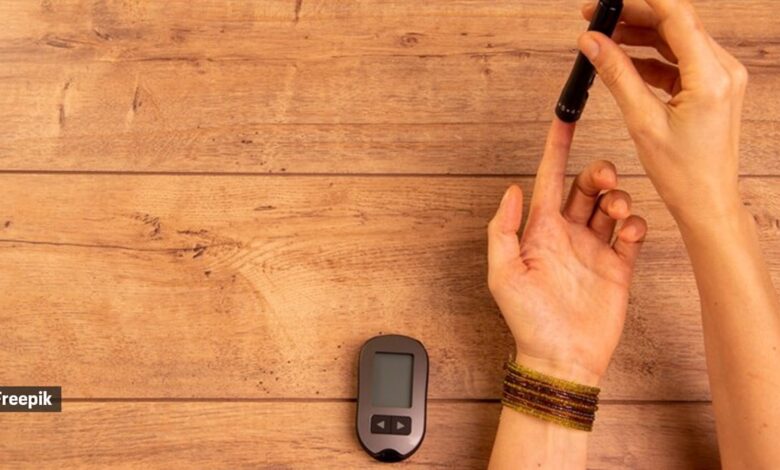Biggest makes diabetics make while testing their blood sugar is…

When it comes to testing blood sugar levels, diabetics often find themselves in a constant cycle of pricking their fingers. However, according to an expert, many do it incorrectly, which can lead to unnecessary pain and discomfort.
In a recent podcast with Revant Himatsingka, also known as Foodpharmer, endocrinolog Dr Roshani Sanghani stated that one of the biggest makes diabetics make while testing their blood sugar is pricking the most sensitive parts of their fingers, which can cause a lot of pain. She said, “Why do people not like pricking? Because they don’t know how to prick also. They prick where it hurts the most. This is the most sensitive point of our finger. Even with our eyes closed, we can recognise the world with our fingertips. So if you stick a needle bang in the middle of that, it’s quite torturous actually… cruel.”
She suggested, “So, why not learn to do ‘namaste,’ and now I can see the edges of your finger. So, the skin that you see after the ‘Namaste’ position—if you poke that point, it will hurt very little. Or we have yoga mudras in India, you do any mudra, what do you get? You get a side border. Any side border, that becomes an easy point to prick compared to the central fleshy part. It hurts much less. And in five fingers you have ten testing sides, so you have lots of options where you can check. This gives you immediate information about how your food is affecting you. The other way is wearing a continuous glucose monitor (sic).”
Story continues below this ad
To confirm whether this works, spoke to Kanikka Malhotra, a certified diabetes educator at Health Pepper.
Should diabetics avoid pricking the tips of their fingers and what other makes do people commonly make during blood sugar testing?
Malhotra stresses, “As a diabetes educator, I advise against pricking the tips of fingers for blood sugar testing. The sides of the fingers have fewer nerve endings and more blood vessels near the surface, making pricking less painful and yielding sufficient blood.”
She adds, “Common makes include reusing lancets, which dulls them and increases pain and infection risk. Also, avoid using alcohol-based sanitisers, as they dry the skin, making pricking more painful; instead, wash with soap and water. Not alternating fingers can cause soreness, so establish a pattern. Ensure you use an adequate lancet depth setting, but avoid a prick that is too deep. If you have trouble getting enough blood, dropping your hand below your wa or gently squeezing from the base of your finger can help.”
How does using techniques like the ‘Namaste’ gesture or yoga mudras help minimise the pain associated with finger pricking?
While the ‘Namaste’ gesture or yoga mudras are not scientifically proven to directly minimise pain from finger pricks, Malhotra states that certain hand positions can “passively help.” Holding the hand downward before testing encourages blood flow to the fingertips. Additionally, warming the hands and fingers before pricking can improve circulation, potentially making it easier to obtain a sufficient blood sample with a less forceful prick. Relaxation techniques, like deep breathing, practiced during yoga, can also reduce the perception of pain calming the nervous system. However, the primary focus should be on proper technique: using the sides of the fingers, and ensuring adequate hydration to promote blood flow.
Other alternative methods or tools that diabetics can use for less painful and more efficient blood sugar testing
“Yes, several alternative methods and tools ex for less painful and more efficient blood sugar testing. Some blood glucose meters require smaller blood samples, reducing the need for deep pricks. Alternate site testing (AST), using areas like the forearm or thigh, can be less painful, but it’s crucial to use a meter specifically approved for AST, as readings may be less accurate during rapid glucose changes. Continuous glucose monitoring (CGM) systems are another option, which uses a sensor inserted under the skin to continuously track glucose levels, eliminating the need for frequent finger pricks. However, CGMs require calibration with occasional fingersticks and may not be suitable for everyone,” explains Malhotra. Story continues below this ad
DISCLAIMER: This article is based on information from the public domain and/or the experts we spoke to. Always consult your health practitioner before starting any routine.







